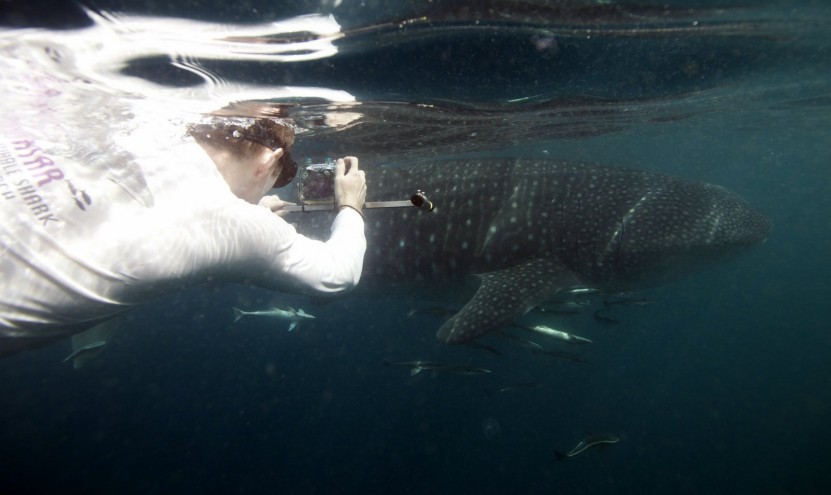Can photography save sharks?

Some view the prospect of meeting a shark underwater with trepidation. Divers though, who regularly see sharks and rays in their natural habitat, travel far and wide to seek them out. Biologists are now developing partnerships with these 'shark paparazzi' to get fascinating insights into the behaviour of these misunderstood fishes.
When I first started work on whale sharks, my main problem was telling them apart. Luckily whale sharks, like other animals such as leopards, penguins and salmon, have spots that are unique to each individual - the equivalent of a human fingerprint.
On whale sharks we photograph the area on either flank, just behind the gills. Back on land, we can upload these images to the ECOCEAN Global Whale Shark Database (www.whaleshark.org) and, following a quick scan, find out who our shark is and where it has come from.
By keeping tabs on individual sharks we can learn their favourite places, preferred foods, where they go and even who their friends are. We can use this information to create effective conservation measures. The challenge has been that, sadly, even we marine biologists can't spend all our time underwater.
Happily though, we have help. As more people explore the ocean, camera in hand, we're learning more about wide-ranging species like whale sharks and manta rays. Over 3000 submitters to the global whale shark database have, between them, identified over 3500 individual sharks from 46 countries.
Several individual whale sharks have been sighted thousands of kilometres apart, giving us important insight into the migratory lives of these gentle giants. One of 'our' Mozambican sharks has now been sighted in Mozambique, South Africa and again back in Mozambique (you can see for yourself here) - a round-trip of over 2000 km!
The success of this system on whale sharks, which has enabled global collaborative projects between research groups, has now spawned an equivalent database for manta rays at www.mantamatcher.org. An image-matching algorithm for identifying individual rays has just gone live, which will greatly assist scientists currently sifting through thousands of images by hand.
Andrea Marshall and myself from the Marine Megafauna Foundation, along with several of our colleagues, have been using photography to further our research for several years now. We thought that this was an opportune time to review its use in scientific studies, share our experiences, and point to some of the most promising developments.
One of these advances is the coupling of cameras with measurement devices, such as the parallel laser system shown in use above. By monitoring the length and growth of individual sharks we can get great insights into pregnancy, lifespan and even social heirarchies.
Even deep-water sharks are starting to share their secrets through the use of remote-operated vehicles and baited video systems. Camera traps, which have revolutionised the study of rare and shy species on land, are likely to be in use underwater soon as well. The possibilities really are only limited by our imaginations.
Its an exciting time to be a field biologist!
If you'd like to read the full scientific publication, you can download it here. This work was supported by Casa Barry Beach Lodge, Ocean Revolution and our lovely individual supporters.



